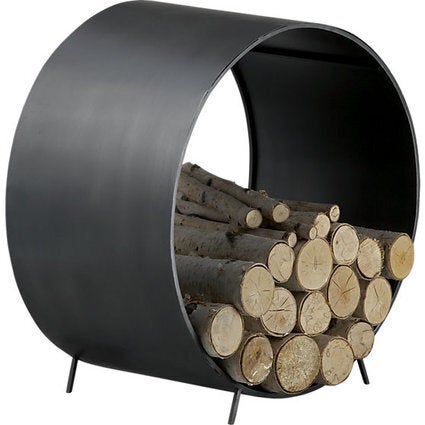
Your outdoor cushions probably have spent the winter outside, exposed to the elements, or crammed into storage. If you’re anything like me, you may have even put them away with a blob of ketchup that has since dried and cracked. Now your task is getting those cushions ready for another season of barbecues and poolside lounging.
Never fear, we’ve got you covered with these tips.
Project: Cleaning Your Outdoor Cushions
Why: Even if you have weatherproof cushions and outdoor curtains, like the ones shown here, they aren’t impervious to the elements, says Ilkka Pirhonen, owner of Burlap Upholstery Studio, a company based in Austin, Texas, that manufactures custom outdoor cushions, among other things.
Most are solution-dyed acrylics and rated “weatherproof.” Cushions also can be spun polyester or vinyl.
All outdoor cushions, such as the ones on this custom outdoor sofa, should feature reticulated foam, a porous material that allows water to quickly run through.
Despite that protection from the elements, they’ll still require maintenance to keep them shipshape.
Regular cleaning. Brush off dust and debris. It’s best to vacuum the cushions, Pirhonen says, since it’ll do a much better job at removing the dirt, especially along seams, which can trap debris inside, where mildew and mould can grow.
Spot cleaning. Sunbrella, a major manufacturer of outdoor fabrics, recommends these steps to remove a stain:
1. Blot — don’t rub — liquid spills with a clean, dry cloth. For oil-based spills, apply an absorbent, such as cornstarch, and then remove it with a straight edge.
2. Spray on a mild cleaning solution of a quarter-cup soap (such as Dawn or Woolite) per gallon of lukewarm water.
3. Rinse the fabric thoroughly to remove all soap residue. Air-dry.
It’s best to clean the entire surface area of the fabric to avoid water rings and stains.
Removing Deep Stains
If you neglected to get that bird poop off right away, then you likely have a spot that needs a bit of work.
1. Prepare a solution of a quarter-cup mild soap per gallon of lukewarm water.
2. Use a soft bristle brush to clean, allowing the solution to soak into the fabric.
3. Rinse the fabric thoroughly to remove all soap residue. Air-dry.
Mould and Mildew Stains
1. Prepare a solution of 1 cup bleach and a quarter-cup mild soap per gallon of water.
2. Spray entire surface and allow to soak into the fabric for 15 minutes.
3. Clean surface with a sponge, clean towel or very soft bristle brush.
4. Rinse the fabric thoroughly to remove all soap residue. Air-dry.
For severe mould and mildew growth, bleach quantities may be increased.
Most solution-dyed acrylics, even coloured fabrics, can be treated with diluted bleach, but check with your manufacturer first.
Cushions on pool decks are more likely to get oil-based stains from sunscreens and lotions. Clean these spills right away. The longer they sit, the more difficult they’ll be to remove.
Preventing Fade
Solution-dyed acrylics, such as these, are the most durable and colourfast fabrics because the fibre is dyed before being made into yarn and woven into cloth, Pirhonen says. The result is a fabric that’s very resistant to ultraviolet rays and colour degradation. Over time, the fabric will fade in direct sunlight, but with proper maintenance, you should expect to get five to 10 years, he says.
Pirhonen suggests testing the bleach on a small, inconspicuous part of the cushion, especially if the cushion is patterned, like these, to make sure it doesn’t discolour.
In its written materials, Sunbrella advises against power-washing cushions because it can damage the material or break the seams.
If you have cushions made from spun polyester, which is more prone to fading but features more dynamic patterns, limit their exposure to sun. When they’re not in use, cover them, bring them inside or place your furniture set in a shaded area of your yard.
Water Issues
Outdoor cushions are largely water-resistant, but that doesn’t mean they won’t take on moisture if left outside. Sunbrella’s guidelines suggest leaning cushions made with reticulated foam on their side to allow water to run off.
Saturated cushions should be placed seam side down to allow them to drain. If the covers have zippers, like these, unzip them to let the water drain. Allow the foam inside to thoroughly dry before using.
If you’re re-covering your cushions, consider having the foam wrapped in ethylene-methyl acrylate film, a thin, noiseless material that helps prevent them from getting wet, Pirhonen says.
Storage and Protection
At the end of the season, store cushions out of the weather. Make sure to clean and dry them thoroughly before putting them away. You also can buy waterproof bags for the cushions to further protect them.
More on Houzz
Also on HuffPost
